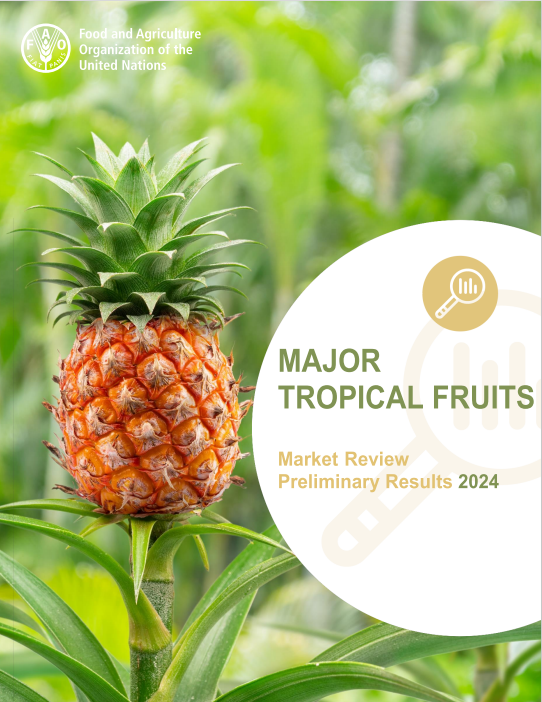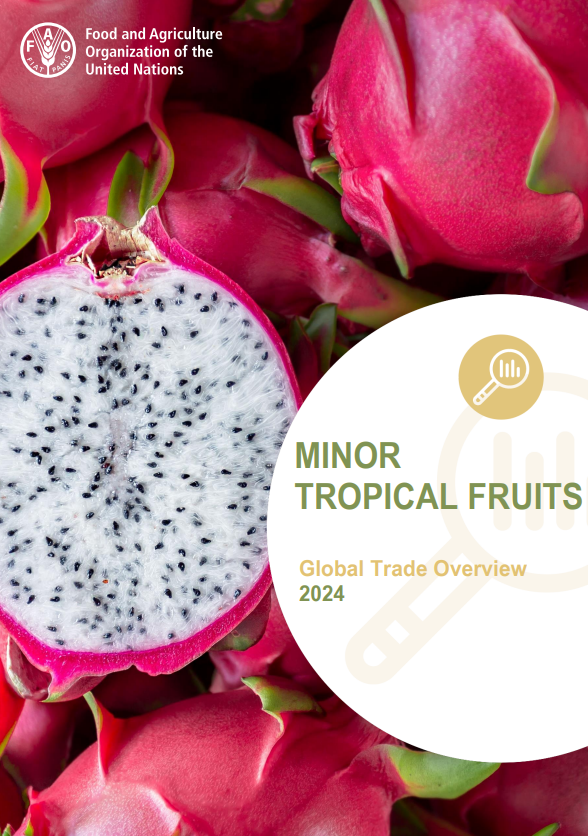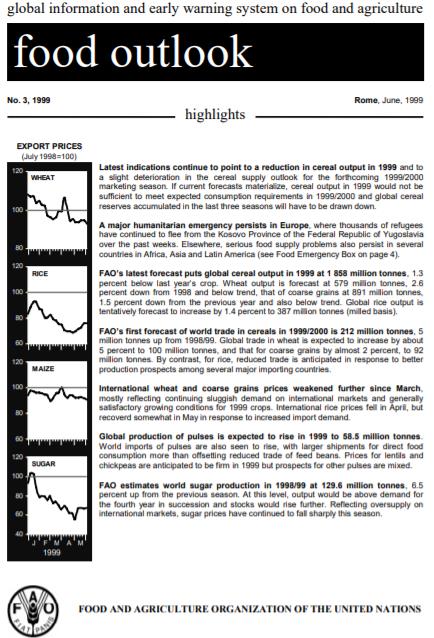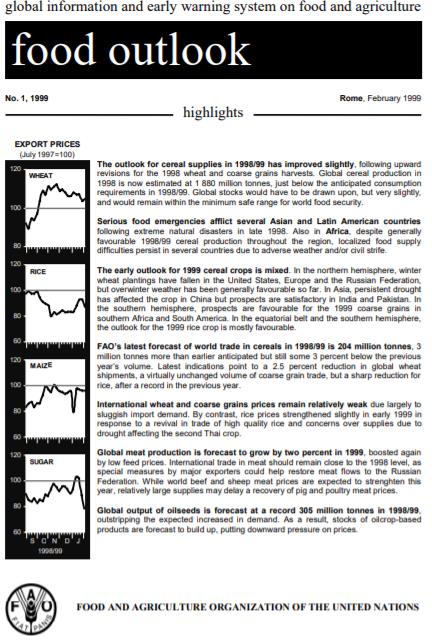Commodity in focus
Global production of tropical fruits has grown steadily over the past decade, predominantly in response to increasing demand in major producer areas. While tropical fruits play a small role in global agricultural trade in overall quantities, accounting for a mere 3 percent of world agricultural food products exports, their high average export unit value is well above USD 1 000 per tonne and places them as the third most valuable fruit group globally, behind bananas and apples. Trade in tropical fruits generates a substantial income for smallholder producers, as well as significant export earnings for many of the producing countries, thereby contributing to their food security.
Global trade in tropical fruits has expanded to unprecedented heights in recent years, reaching an estimated aggregate export volume of close to 11 million tonnes in 2023. Strong demand growth in key importing countries has led to ample investments in improving productivity and expanding production areas in supplying countries, notably for avocados.
Current releases

Major Tropical Fruits Market Review. Preliminary results 2024
24/12/2024
The Tropical Fruits Market Review Preliminary Results is issued on an annual basis to Members and Observers of the Sub-Group on Tropical Fruits of the...

Minor Tropical Fruits Global Trade Overview 2024
07/11/2024
This report provides a concise evaluation of the latest trends and developments in the global trade of minor tropical fruits as recorded under HS code...
More Publications

Food Outlook - June 1999
03/06/1999
Latest indications continue to point to a reduction in cereal output in 1999 and to a slight deterioration in the cereal supply outlook for the forthcoming 1999/2000 marketing season. If current forecasts materialize, cereal output in 1999 would not be sufficient to meet expected consumption requirements in 1999/2000 and global cereal reserves accumulated in the last three seasons will have to be drawn down. A major humanitarian emergency persists in Europe, where thousands of refugees have continued to flee from the Kosovo Province of the Federal Republic of Yugoslavia over the past weeks. Elsewhere, serious food supply problems also persist in several countries in Africa, Asia and Latin America. FAO’s latest forecast puts global cereal output in 1999 at 1 858 million tonnes, 1.3 percent below last year’s crop. Wheat output is forecast at 579 million tonnes, 2.6 percent down from 1998 and below trend, that of coarse grains at 891 million tonnes, 1.5 percent down from the previous year and also below trend. Global rice output is tentatively forecast to increase by 1.4 percent to 387 million tonnes (milled basis). FAO’s first forecast of world trade in cereals in 1999/2000 is 212 million tonnes, 5 million tonnes up from 1998/99. Global trade in wheat is expected to increase by about 5 percent to 100 million tonnes, and that for coarse grains by almost 2 percent, to 92 million tonnes. By contrast, for rice, reduced trade is anticipated in response to better production prospects among several major importing countries. International wheat and coarse grains prices weakened further since March, mostly reflecting continuing sluggish demand on international markets and generally satisfactory growing conditions for 1999 crops. International rice prices fell in April, but recoverd somewhat in May in response to increased import demand. Global production of pulses is expected to rise in 1999 to 58.5 million tonnes. World imports of pulses are also seen to rise, with larger shipments for direct food consumption more than offsetting reduced trade of feed beans. Prices for lentils and chickpeas are anticipated to be firm in 1999 but prospects for other pulses are mixed. FAO estimates world sugar production in 1998/99 at 129.6 million tonnes, 6.5 percent up from the previous season. At this level, output would be above demand for the fourth year in succession and stocks would rise further. Reflecting oversupply on international markets, sugar prices have continued to fall sharply this season.

Food Outlook - February 1999
04/02/1999
The outlook for cereal supplies in 1998/99 has improved slightly, following upward revisions for the 1998 wheat and coarse grains harvests. Global cereal production in 1998 is now estimated at 1 880 million tonnes, just below the anticipated consumption requirements in 1998/99.
| With around 2 700 species, tropical fruits are not only a source of nutrition, but also of income generation for farmers who produce them for export. | |
| In global commodity trade, tropical fruits constitute a comparatively new group and since 1970, they have emerged as significant in the international marketplace. | |
| Export volumes of fresh tropical fruits display the fastest average annual growth rates among internationally traded food commodities. | |
| Advances in transportation, trade agreements and shifting consumer preferences in favour of these fruits led to trade growth. | |
| Tropical fruits are highly perishable during production and distribution, and so environmental challenges are among the key obstacles to sustaining production and ensuring that international markets are supplied. | |
| Increasingly, erratic weather events are a particularly acute challenge to growing tropical fruits because the vast majority are produced on smallholder farms of less than 5 ha where cultivation is highly dependent on rainfall. |
| An estimated 99 percent of tropical fruit production originates in
developing countries, predominantly in Asia and Latin America and a
smaller share in Africa. |
| In most producing zones, tropical fruits continue to be cultivated at the subsistence rather than the commercial level. |
| The combined exports of the four major tropical fruits represent only 5 percent of total production volume, and the remainder is consumed or otherwise utilized domestically. |
Dashboards
Related links
- Global Trade in Bananas
- FAO Intergovernmental Group on Bananas and Tropical Fruits
- International Year of Fruits and Vegetables (IYFV)
- Committee on Commodity Problems (CCP)
- Global Commodity Markets
- Responsible Business Conduct (RBC) in Agriculture
- OECD-FAO Guidance for Responsible Agricultural Supply Chains
- World Banana Forum
- TR4 Global Network
For general inquiries, contact:
